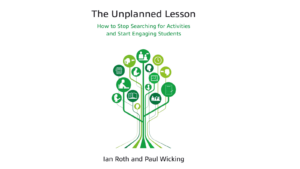Applying the results of intercultural studies for the purposes of international communication has become an exciting area for EFL learners and teachers alike. Whether for the purpose of achieving a deeper understanding and more acceptance in the multi-lingual language classroom or an effort to hold English classes in an overcrowded refugee camp in Athens where the locals come from a different culture to those arriving (who may also represent different cultures), an intercultural approach is not only a must but, on occasion, the only way to avoid explosive situations escalating.
The A-Z of Intercultural Communication is a compact collection of stimulating activities that promotes intercultural awareness. It provides material that intermediate to advanced students and their teachers (on occasion, themselves novices in the area) can use, not just to find out about but also to practise communication across cultures.
The alphabetically ordered and clearly laid out texts with their unobtrusive but evocative illustrations always start with trainer’s notes describing the focus, duration and the activity type (e.g. individual, pair or group work and, sometimes, plenary). The trainer’s notes include the tasks to be carried out (both the logistics and the stages of the given activity). There is a valuable section with follow-up activities that can also be integrated into the session when working with multi-level classes.
A sure sign of the attractiveness of such an activity book is when the reviewer feels an urge to try the activities the next day s/he walks into the classroom and not just to use the activity, but also to share her experience and encourage further discussion. B for Body Language reminded me of my Achuar students deep in the Amazonian jungle as I remembered how reluctant they were to raise their eyes to meet mine. It would be part of an extensive ethnographic essay to explain why members of the Achuar tribe behave this way and why in an urban context in Ecuador (where some of them were headed) their behaviour would be generally deemed shifty and dishonest. In the end, we agreed that during their short presentations they would stand and look at a point on the whiteboard over my right shoulder.
In the book, the twenty-six letters of the alphabet are used for the titles of issues that may cause misunderstanding or offence. Beyond explaining in an effective and economical manner what may lead to uncomfortable situations arising (one of the reasons being that our own culture is most of the time not stated explicitly), the activities offer a chance for reflection as well as solutions for remedial action.
The letter O (Own Critical Incidents) reminded me of an incident that I will never forget. I was working as a volunteer in Ethiopia. It was my last day after almost three years there and I decided to show the film, “Pay It Forward” as a farewell to my students. The only venue where we could do it was the huge canteen where hundreds of my students were having their meagre dinner while we were announcing the upcoming event with music in the background. Ethiopian music is an acquired taste and when one of my students started playing an especially monotonous piece of music with what sounded to me like high-pitched, everlasting whining, I asked him to look for something else. “But it’s the Ethiopian anthem”, came the answer. I was mortified. It is quite something when students, on hearing the national anthem carry on eating and chatting, because in MY culture, you stop what you are doing and even stand up straight!
F for Food will probably be another favourite in EFL classes. My monolingual, Spanish-speaking students in Cuenca, Ecuador were cringing in their chairs when I told them how I ate “lemon ants” in the jungle. These are ants that live on the trunks of wild lemon trees and, as a result, have a faint taste of lemon when you eat them – live. When I explained that the freshly roasted grubs (full of protein) tasted really good, some of my urban students decided they didn’t want to know any more about my encounters with the cuisine of the Achuar in the rain forest. The Ecuadorian custom of eating guinea pigs (a pet in other cultures) now cuts across my Hungarian and Ecuadorian extended families. Those in Cuenca take me out to eat it, while my Hungarian niece grumbles that it is tantamount to eating your grandmother.
The photocopiable activities of A-Z of Intercultural Communication are all useful and often work at various language proficiency levels. It is clear that the authors (Rudi Camerer and Judith Mader) as well as the editor (Julie Pratten), beyond having skills in designing engaging activities, also have a sound grounding in intercultural communication theory. The concept of time, polite behaviour including polite refusals, judgemental statements and stereotypes are all put into focus and accompanied by insightful and fun activities. The Internet links allow the students (and the teacher) to research further and the keys to some of the more complex activities save time and lend confidence to the trainers, who may not all be quite sure whether blowing your nose in public is acceptable in all cultures.
All in all, I find A-Z of Intercultural Communication a gem that should be made part of the EFL curriculum even at an earlier stage than the suggested intermediate level. Trainers working in a multicultural context are well aware that innocent-looking exchanges like greetings, handshakes and introductions can be a minefield (see Activity C in the book). For those of us whose context is working with large, monolingual Spanish groups, some adaptation may be required, but considering the fact that about 85% of English language encounters take place between non-native speakers who come from two or more different cultures, the book is definitely worth introducing in the EFL classroom as well as exploring further.
However, adaptation (not just of materials but to different cultures) is something teachers and trainers do all the time. I recall that my Ethiopian students often asked me what religion I belonged to. It was only to the inner circle of my students that I told the truth (they have been praying for me ever since). To the others – I lied.




